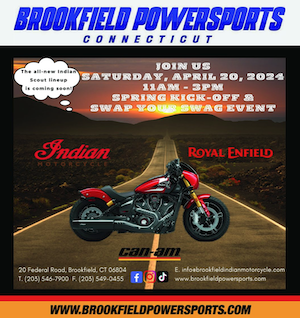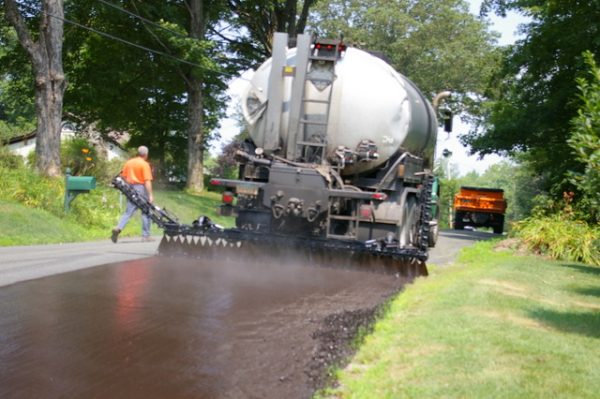By Steve Smith of RIDE-CT.com
 This is the time of the year when roads are being resurfaced with chip seal, which causes problems for riders. And that’s not the only road surface hazard out there. As motorcyclists we need to be diligent to scan ahead for potential hazards that may cause us problems or lead to a crash. There are many things to be scanning for, including road and surface conditions. Although road crews are out there doing their best to repair and improve road surfaces, there are things to you should be wary of:
This is the time of the year when roads are being resurfaced with chip seal, which causes problems for riders. And that’s not the only road surface hazard out there. As motorcyclists we need to be diligent to scan ahead for potential hazards that may cause us problems or lead to a crash. There are many things to be scanning for, including road and surface conditions. Although road crews are out there doing their best to repair and improve road surfaces, there are things to you should be wary of:
Chip seal is a pavement surface treatment that combines one or more layers of liquid asphalt and fine stone aggregate. When first applied there is lots of loose surface stone that can make for interesting riding. It is advisable when dealing with poor surfaces like this to keep the bike as upright as possible, and avoid any sudden changes in direction or speed.
There is a lot of sand on the roads, too. Some municipalities are diligent about getting street sweepers out early in the season, while others seem to take all summer to clean the roads. Heavy summer rain does a decent job washing sand off the roads, but it does collect near the shoulders and wherever there is rain runoff. Heed the previous advice to avoid any sudden changes in direction or speed – especially the panic reaction to hit the brakes.
Hitting a sand patch when leaned over in a turn has caused many riders to have a pucker factor moment or worse. Many times it may be possible to ride out the small sand patch. Straightening up will cause running wide in the turn, and braking could lead to loss of traction and possible low side. This is where it becomes important to be scanning the road surface ahead and avoid sand patches when possible.
Potholes are abundant after the winter and while not all are large enough to swallow a motorcycle tire whole, some can cause considerable grief or damage. At a minimum the sharp, abrupt edges of some potholes can cause a bent rim or two. At worse it could lead to a loss of control. It is best to avoid hitting potholes and I find they provide a good opportunity to practice swerving techniques.
Here are two “pothole videos” to enjoy:
 Ride CT & Ride New England Serving New England, NYC and The Hudson Valley!
Ride CT & Ride New England Serving New England, NYC and The Hudson Valley!




